

Stevia is a cute herb and an excellent alternative to sugar.
Simple Stevia facts
Name – Stevia rebaudiana
Family – Asteraceae
Type – perennial
Flowering – summer
Foliage – evergreen
Height: 2-4 inches (5-10 cm) – Exposure: full sun – Soil: ordinary
Grown either indoors or outside, it is best associated to herbs and spices. Stevia appears today as an ingredient in various cosmetics and even some medicines as a flavor enhancer.
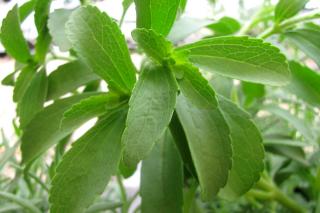
Easy to grow and to care for, its leaves are used for their high sweetening capabilities and their low caloric content.
First of all, note that stevia is vulnerable to temperatures below 40°F (5°C) and consequently is only a perennial in relatively hot lands.
In oceanic or Mediterranean climates it’s perfectly possible to try growing stevia, even though there is a risk of seeing the plant wither when freezing temperatures occur.
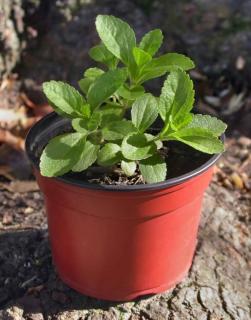
The advantage of growing stevia in a pot is that it can be brought inside when the cold weather sets in.
If you have opted for growing your stevia outside, the leaves will probably wither as soon as the first cold days hit.
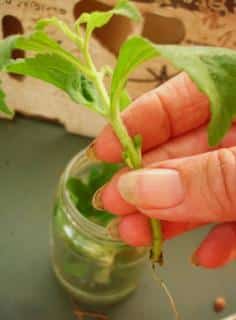
Harvest your stevia leaves when your needs arise and as soon as they have reached their adult size.
If you grow your stevia as if it was an annual, favor harvesting all the leaves at once at the end of the summer.
With zero calories, it doesn’t induce weight gain (but what it is eaten together with might, of course).
It is recommended for diabetes diets. Indeed, for this type of patients it doesn’t lead to an increase in glycemic index. Stevia has hypoglycemic properties.
Tooth care is one major benefit of stevia. Not only does it do away with cavity-forming sugar, it also actively protects teeth and gums:
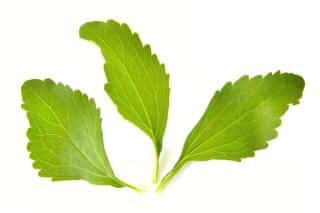 Stevia hinders bacterial growth on teeth, and thus helps avoid cavities.
Stevia hinders bacterial growth on teeth, and thus helps avoid cavities.Stevia also has health benefits on other parts of the body:
Stevia has also entered the world of cosmetics.
Its leaves are known to soften and smooth skin, and reduce wrinkles. Stevia leaves also have antibacterial properties that are good for skin.
Stevia extracts are effective even when combined to clay. Here is how to make a stevia and clay face mask:
Ingesting stevia is not recommended to pregnant or nursing women.
Hypoglycemic and hypotensive properties of stevia must be considered when undergoing treatment for diabetes and blood pressure.
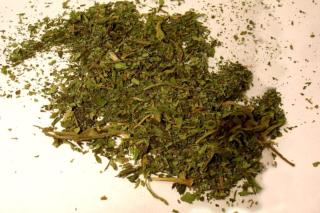
It is impossible to ignore the strong sweetening capabilities of stevia.
Stevia extracts are up to 300 times sweeter than sucrose!
Stevia leaves have a sweetening power that is 30 times higher that sugar obtained from red beets.
This herb perfectly feels at home in your kitchen, to sweeten your teas, infusions, dishes, yogurts, smoothies, cakes and other desserts.
Stevia leaves bring on a slight taste of licorice.
This herb originated in South America, mainly Paraguay and Brazil. It has been used by native Indians for many years. They called it “sweet plant”. They used it to flavor their infusions and for medicine.
At the beginning of the XXth century, stevia was grown commercially and slowly penetrated the international market. Towards the middle of the XXth century, the Japanese mastered its cultivation.
Today, stevia is grown in Brazil, Japan, and also China. It has become an unavoidable sweetener for our cooking, without any calories.
As a food additive, only stevia extracts are officially authorized as sweeteners. The plant and leaves themselves are not.
This approval as food additive is very recent, since it only goes back to 2009.
A 100% natural sweetener, stevia has the added advantage of not adding any calories to meals when you use it!
Once harvested, stevia leaves must be dried in the sun. They must then be powdered with a grinder or mortar and pestle. Keep the powder in a dry storage. Use directly.